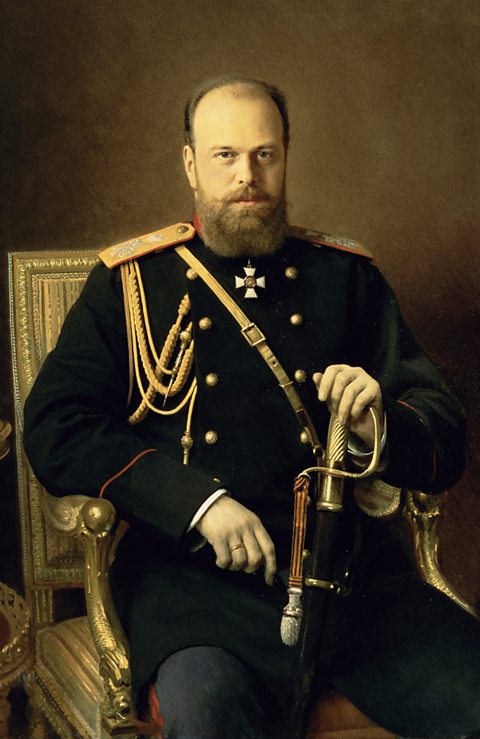Difficulties in governing the Tsarist State
The only genuine limit to the power and influence of the Tsar was the sheer expanse of the Empire and the scale of corruption and incompetence on the part of his ministers and state officials.
However, revolutionary ideas were also on the increase.
The size of the Russian Empire

The far-flung corners of the Empire, some thousands of miles from Moscow, often proved ungovernable. But the scale of the Empire, the poor infrastructure and the nature of the population also made it difficult for opposition to the Tsar to grow:
- the bulk of the population were mostly illiterate peasant farmers
- this made it difficult to spread liberal or revolutionary ideas using books or pamphlets
- peasants lived largely in remote, widely dispersed villages
- it was not easy for them to unite in a challenge to the Tsar
- the poor state of the roads and railways made it difficult for ideas to spread
Revolutionary ideas

As a result of the TsarÔÇÖs unlimited power the only way to challenge Tsarist autocracy was through acts of rebellion. Opposition groups began to grow as a consequence of successive TsarsÔÇÖ refusal to grant reform and improve living conditions:
Liberals wanted the emerging middle class to have increased political influence. Western European countries had developed constitutional governments and increased political rights for their citizens. Many liberal thinkers wanted the same for Russia.
Radical opposition groups often carried out political assassinations. Populism existed in the universities, while the PeopleÔÇÖs Will tried to assassinate Alexander III in 1887. 1903-1904 became known as the Years of the Red Cockerel when peasants seized a great deal of land in the countryside.
Marxist thinking had developed in Russia in the late 1800s. Karl Marx had promoted the idea that power should be in the hands of the masses. Revolutionary groups which combined MarxÔÇÖs aims with their own goals developed.
The Social Revolutionaries adopted a combination of Marxist and Populist beliefs. They wanted to overthrow the government in favour of giving power to the peasants. Although they were greatly uncoordinated in their efforts, they carried out approximately 2,000 political assassinations in the years leading up to the 1905 Revolution.
The Social Democrats' beliefs were based on Marxism. They did not expect the peasants to rise in revolution. They focused on agitation amongst the workers in the cities. In 1903, the group split after an ideological disagreement.
The Mensheviks, led by Martov, wanted revolution from below (by the workers) to occur naturally. However, the Bolsheviks led by Lenin, believed revolution should come as soon as possible. Power would then be held by a small group (the dictatorship of the proletariat) until the workers were ready to rule themselves.
Corruption and incompetence
At the turn of the century, the Russian Civil Service can be seen to be backward and selfish:
- Many civil servants were poorly paid resulting in widespread bribery.
- Persuasive civil servants could easily influence Tsar Nicholas II, who was unsure of himself and indecisive.
- Promotion relied more on years of service rather than competence.
- Many bureaucrats had little understanding of the importance of industrialisation.
- The vast expanse of the Empire meant that taxation was difficult to organise and police.
- Hence, governmental income was often inadequate.